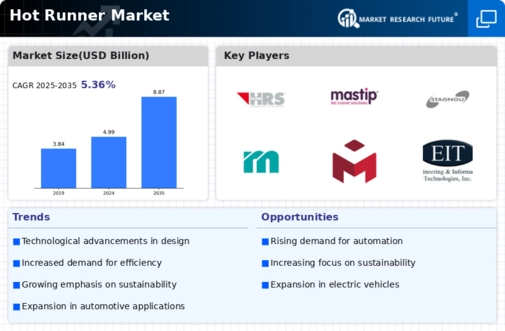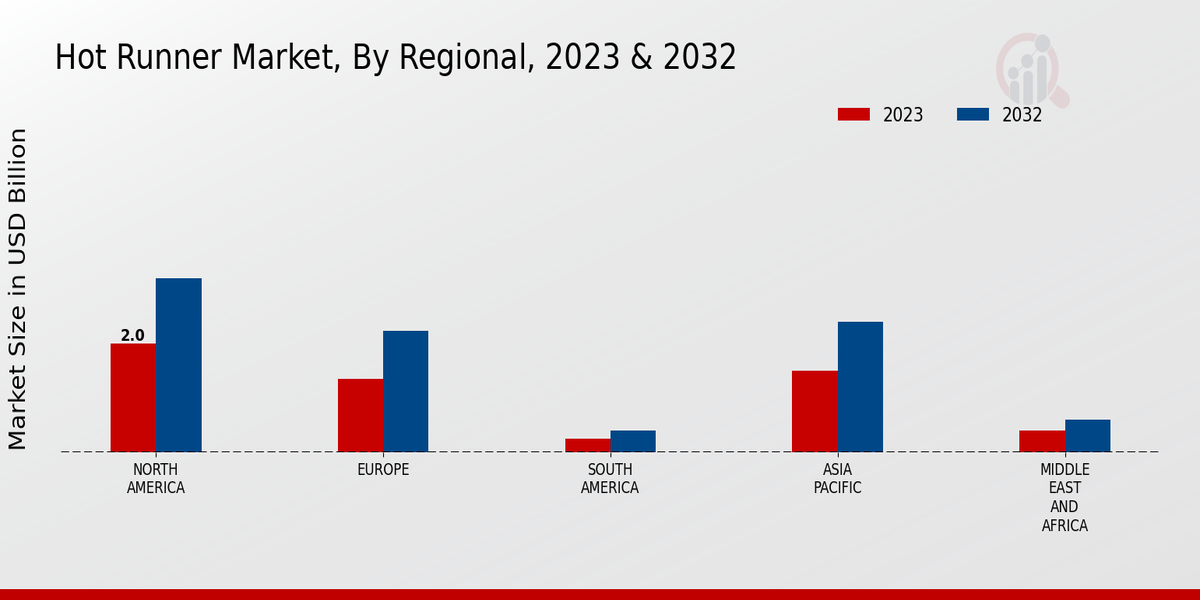Market Growth Projections
The Global Hot Runner Market Industry is projected to experience robust growth over the next decade. With a market value expected to reach 4.99 USD Billion in 2024 and further expand to 8.87 USD Billion by 2035, the industry is on a promising trajectory. The anticipated CAGR of 5.37% from 2025 to 2035 indicates a sustained demand for hot runner systems across various sectors. This growth is driven by factors such as technological advancements, sustainability initiatives, and the increasing need for efficient manufacturing processes. The market's expansion reflects the evolving landscape of global manufacturing and production.
Sustainability Initiatives
Sustainability initiatives are becoming a pivotal driver for the Global Hot Runner Market Industry. As industries strive to reduce their environmental footprint, the demand for energy-efficient and waste-reducing manufacturing processes is on the rise. Hot runner systems contribute to sustainability by minimizing material waste and energy consumption during production. For example, the ability to recycle materials in hot runner applications aligns with global sustainability goals. This growing emphasis on eco-friendly practices is likely to enhance the adoption of hot runner technology, thereby fostering market growth in the coming years.
Technological Advancements
The Global Hot Runner Market Industry is experiencing a surge in technological advancements, which enhances the efficiency and performance of hot runner systems. Innovations such as improved temperature control and advanced materials are being integrated into hot runner designs, leading to better energy efficiency and reduced cycle times. For instance, the adoption of electric heating elements has been shown to minimize energy consumption while maintaining precise temperature control. This trend is likely to drive the market's growth, as manufacturers seek to optimize production processes and reduce operational costs. As a result, the Global Hot Runner Market is projected to reach 4.99 USD Billion in 2024.
Growth in the Packaging Sector
The packaging sector is witnessing substantial growth, which is positively impacting the Global Hot Runner Market Industry. With the rise of e-commerce and consumer goods, the demand for efficient and high-quality packaging solutions is increasing. Hot runner systems are instrumental in producing intricate packaging designs with high precision and speed. This efficiency not only meets consumer expectations but also reduces production costs. As the packaging industry continues to expand, the Global Hot Runner Market is expected to benefit significantly, with a projected CAGR of 5.37% from 2025 to 2035.
Emerging Markets and Industrialization
Emerging markets are experiencing rapid industrialization, which is driving the Global Hot Runner Market Industry. Countries in Asia-Pacific and Latin America are investing heavily in manufacturing capabilities, leading to increased demand for advanced production technologies, including hot runner systems. This industrial growth is fueled by a rising middle class and increased consumer spending, creating a favorable environment for hot runner adoption. As these markets continue to develop, the Global Hot Runner Market is poised for substantial growth, reflecting the broader trends of globalization and technological advancement.
Rising Demand for Lightweight Materials
The increasing demand for lightweight materials across various industries is significantly influencing the Global Hot Runner Market Industry. Industries such as automotive and aerospace are shifting towards lightweight components to enhance fuel efficiency and reduce emissions. Hot runner systems facilitate the production of complex geometries and lightweight designs, which are essential for these applications. This trend is expected to propel market growth, as manufacturers adopt hot runner technology to meet the evolving requirements of lightweight materials. The market is anticipated to expand further, with projections indicating a growth to 8.87 USD Billion by 2035.












